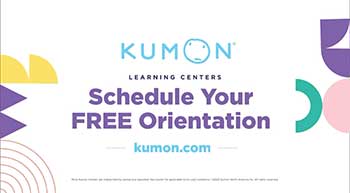When it comes to supplemental education programs for K-12 students, two big names stand out: Kumon and Huntington Learning Center. Both offer tutoring and structured learning programs designed to help students improve academic skills, confidence and study habits.
But how do you decide which one is the better fit for your child? Here’s an in-depth look at the pros, cons and key differences between Kumon and Huntington Learning Center.
A Brief Comparison Table
| Features | Kumon | Huntington Learning Center |
| Instructional Approach | Structured daily worksheets for independent practice | Customized tutoring sessions and guided homework support |
| Curriculum | Focuses solely on math and reading skills | Covers math, reading, writing, study skills, test prep and more |
| Format | Independent worksheet completion at home | One-on-one and small group tutoring sessions |
| Cost | $100-200 per month | $50-100 per hour session |
| Results | Helps master fundamentals through repetition | Builds understanding through personalized instruction |
| Availability | Thousands of centers globally | Over 300 centers, primarily in the U.S. |
Overview Of Kumon
Founded in 1958 by Japanese educator Toru Kumon, Kumon operates over 25,000 learning centers in 50 countries. The Kumon Method focuses on daily practice of math and reading worksheets tailored to each student’s ability level.
As students master new skills, they progress to more advanced worksheets in small, incremental steps.

Pros of Kumon:
- Highly structured, step-by-step approach helps students master fundamentals through repetition and practice
- Worksheets are tailored to each student’s ability, so they’re never too easy or difficult
- Focuses on developing math, reading and writing skills needed for school curriculum
- Affordable pricing, often less expensive than private tutoring
- Availability of over 4000 Kumon centers worldwide
Cons of Kumon:
- Rigid, worksheet-based method isn’t engaging for all learning styles
- Lacks broader enrichment opportunities beyond math and reading
- Parents need to invest time monitoring and supervising daily worksheet completion
- Minimal feedback provided beyond worksheet correction
- Focuses mainly on repetition versus creative thinking or problem solving
Overall, Kumon is ideal for students who benefit from structured daily practice to master foundation skills. But the repetitive worksheets and limited feedback may not suit visual, hands-on or reluctant learners.
Overview Of Huntington Learning Center
Founded in 1977, Huntington Learning Center takes a broader tutoring approach focused on customized instruction. With over 300 locations in the U.S., Huntington offers reading, math, writing, study skills, test prep and other academic support.
Pros of Huntington Learning Center:

- Offers highly customized programs tailored to each student’s needs
- Combines one-on-one tutoring, small group instruction and guided homework support
- Provides enrichment beyond math and reading, like writing, study skills and test prep
- Fun games and educational software used to supplement instruction
- Ongoing academic evaluations and progress reports for parents
- Addresses skill gaps, helps improve grades and boosts confidence
Cons of Huntington Learning Center:
- More expensive than Kumon, averaging $50-100 per hour session
- Quality and teaching methods vary between locations and tutors
- Lacks the structure and repetition of the Kumon worksheets
- Requires motivation from the student for self-paced homework
- Scheduling individual tutoring sessions can be challenging
The flexibility and well-rounded approach of Huntington Learning Center works well for students needing enrichment, motivation and confidence building. But the higher cost and inconsistent quality between locations are downsides to consider.
Also Read: Comparison Between Sylvan Learning And Varsity Tutors.
Key Differences Between Programs
While both Kumon and Huntington aim to improve students’ academic abilities, their methods significantly differ:
Instructional Approach
- Kumon utilizes structured daily worksheets for independent practice. Huntington uses tailored tutoring sessions and guided homework support.
Curriculum
- Kumon focuses solely on developing math and reading skills. Huntington addresses math, reading, writing, study skills, test prep and more.
Format
- Kumon relies on independent worksheet completion at home. Huntington offers one-on-one and small group tutoring sessions.
Cost
- Kumon runs $100-200 per month. Huntington costs $50-100 per hour session.
Results
- Kumon helps master fundamentals through repetition. Huntington builds understanding through personalized instruction.
Availability
- Kumon has thousands of centers globally. Huntington has over 300 centers, primarily in the U.S.
So, in summary, Kumon is more affordable and accessible but Huntington provides more well-rounded, engaging instruction. The better program depends on each student’s needs, learning preferences and budget.
Also Read: Comparison Between SNHU And Phoenix University.
Is One Program Better For Improving Academic Performance?
Both Kumon and Huntington can lead to tangible improvements in grades, test scores and skill mastery. However, comparing academic outcomes between the two learning programs isn’t so clear cut.
Multiple studies show the Kumon Method helps students significantly improve math calculation and reading comprehension skills. Completing the Kumon worksheets develops the step-by-step mastery needed to tackle more complex math concepts and reading assignments.
Research on Huntington’s outcomes highlights improved grades, confidence and study habits among students. However, the results vary more widely since instruction is individualized. Two students at the same Huntington center working on different skills may see very different gains.
For students needing remedial support or structuring, Kumon often leads to quicker gains in foundational skills. But Huntington may better address wider gaps in understanding across multiple subjects.
In terms of standardized tests, both programs provide practice and strategies to improve scores. Kumon focuses specifically on building SAT, ACT and state test ability through exposure to similar question types. Huntington offers actual test prep courses to target the content and format of upcoming exams.
So rather than declaring one program as better for academic achievement, it’s about matching the program to the student’s needs and goals. A student struggling with math fundamentals might excel with Kumon’s structured approach, while a student needing writing enrichment and study strategies may benefit more from Huntington.
Finding The Right Program For Your Child’s Needs
Here are some key considerations as you evaluate which supplemental learning program is the better fit for your child:
- Learning Style: Does your child prefer independent, repetitive practice like Kumon or customized tutoring like Huntington? Understanding your child’s interests and motivations around academics helps determine which style suits them best.
- Subject Needs: Is your child falling behind primarily in math and reading fundamentals that Kumon targets? Or do they need a wider range of instruction like writing and study skills where Huntington may be preferable?
- Budget: Kumon’s worksheets generally run $100-200 monthly. Huntington’s hourly tutoring averages $50-100 per session with packages. Consider how much you can invest in supplemental instruction.
- Availability: Accessibility may dictate choices if Kumon is widely available but Huntington has limited centers in your region. Combining tutoring with online Kumon worksheets can provide flexibility.
- Time Commitment: Kumon requires parent monitoring while Huntington tutoring happens on-site. Determine how much time you can spend driving to centers and overseeing homework.
Start by having your child complete free assessments at local Kumon and Huntington centers. Seeing your child’s skills and needs upfront helps assess which learning program provides the best fit.
Taking advantage of free trials and introductory offers can provide first-hand experience with the methods and instructional styles.
Also watch this review video of Kumon!
Frequently Asked Questions (FAQ)
Huntington Learning Center offers more well-rounded and engaging instruction compared to Kumon’s repetitive worksheets. Sylvan Learning and Mathnasium also provide more interactive supplemental learning programs. But for improving math and reading fundamentals specifically, Kumon’s structured approach can be very effective.
Both Huntington and Sylvan offer personalized tutoring. Huntington tends to use more games, educational software and hands-on methods. Sylvan relies more heavily on tutoring lessons and drills. Outcomes vary based on the individual instructors at each location. Compare reviews and sit in on sessions at local centers to evaluate quality.
One-on-one tutoring is better for enrichment, motivation and addressing wider academic gaps. But Kumon’s affordable worksheets excel at building math, reading and writing fundamentals through daily repetition. Combining Kumon worksheets and occasional tutoring can provide both structure and personalized attention.
Yes, studies show Kumon improves math proficiency, reading comprehension, concentration and self-learning skills in students who complete the daily worksheets. The repetition and incremental mastery of foundational skills helps develop academic competencies. Supplementing with other learning methods can further boost effectiveness.
Also Read: Comparison Between Skill Success And Udemy.
The Bottom Line
When choosing between Kumon and Huntington Learning Center, consider your child’s academic requirements, learning preferences and budget. Kumon provides affordable structure while Huntington offers personalized, comprehensive instruction. Evaluate free trials to see which one suits your child.
Mixing these programs or using one for a period when skills need development can provide the right support over time. Most importantly, find the right supplemental learning fit to help your child reach their potential.
